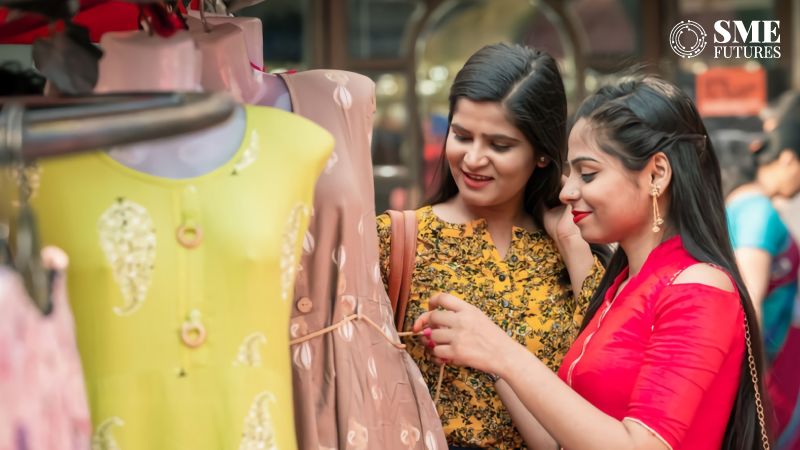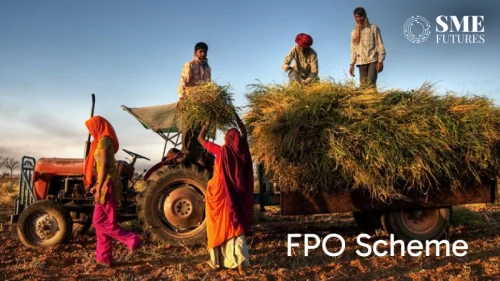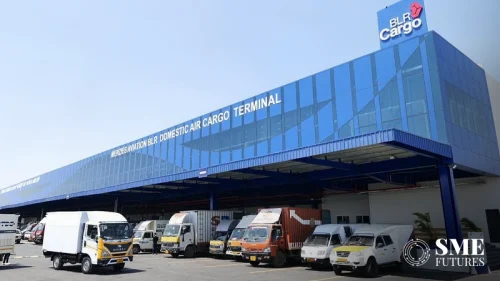The festive season is just around the corner and the garment manufacturers and traders are eagerly waiting for their sales to ramp up. Preparations are afoot and garment shop owners are chalking out their plans of action. Due to the cutthroat competition in this sector, the garment shop owners are heavily relying on the uniqueness and quality of their products. From the Chikankari embroidery artists of Lucknow to the Kanjivaram weavers of Tamil Nadu, the local artisans throughout the country are eagerly looking forward to the festive season.
“Chikankari embroidery has been the USP of Lucknow’s garment industry since ages. People like to wear it as it is very comfortable and elegant. In recent times, the sales have declined a bit, but I am hopeful that they will surge this time,” says Prakash Sharma, owner of the Lucknow Chikankari Shop.
Come October and festivities will be in the air. Starting from Navratri and leading up to Diwali and bringing new hope to the retailers who can finally cash in on these opportunities after incurring heavy losses and a market freeze during the lockdowns all over the country. Although the sales are yet to reach the heights of the pre-COVID levels, things are looking up.
“We are expecting a good turnout this year. With no COVID restrictions this time, the sales will zoom. But there is still a looming question about whether the industry will be able to revert to the pre-COVID scenario,” says Nitesh Lobo, owner of LOBO Tailors, Lucknow.
Also Read: Kankatala Sarees: A beautiful style statement from the south that will always remain in vogue
A look at the current state of affairs
“Every shop owner hopes for a good response. During Ganesh Chaturthi, we experienced a 25 per cent increase in customer footfalls and sales. But this is nowhere near what it was before COVID struck,” says Kanti Gala, owner of Manav Studio, an apparel and tailoring shop in Mumbai.
The garment and textile industries were the sectors that bore the brunt of the pandemic. Many shops had to shut down as their owners couldn’t survive under their escalating debts. Also, having to pump in money into a sector which they had lost hope in seemed to be a huge gamble. The ones who stood their ground are trying to make a comeback.
“Shops were completely shut during the lockdown. People tried to make a comeback with their businesses, but the second wave robbed them of any remaining hopes. I’ve myself seen multiple clothing businesses shut down in front of my eyes. It’s a sad state of affairs but that is what reality is; it hits hard,” Sharma points out.
“Not just us, but every business was hit severely during the pandemic. The prices increased, everything became expensive and there wasn’t any money coming in, rather it was only moving out. Since there are a lot of people depending on you, you have to stop investing at some point and wait and watch,” asserts Parth Khanna, former owner of a clothing shop in Lucknow.
The surviving lot have their hopes high. They are expecting to do a roaring business in the upcoming festive season as the fear of contracting the corona virus has abated significantly amongst the general population.
What’s in stock?
“We have to keep a large amount of stock as the customers always want to look out for a bit more. Some might like their clothes plain and some might like them shiny. A well-stocked store attracts scores of customers,” Gala tells us.
The wedding season is also approaching, and the retailers have to be on their toes to deliver to their customers. The stores must offer their customers the best suits and designs possible and for that they must go above and beyond to meet their expectations.
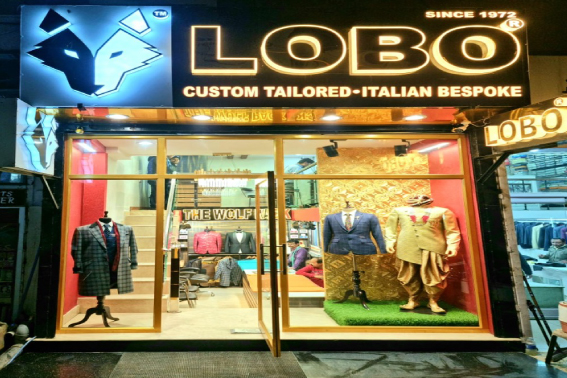
“The selection of materials requires work and a lot of attention. We have to keep various fabrics in stock to offer the customers a wide variety and range to choose from. To acquire certain fabrics also gets difficult sometimes as they run out of stock in a short time,” Lobo informs us.
The people who come late to the party often have to resort to frenzy buying. They run out of patience if they have to wait for their chosen products. This leads to the retailers having to explain their situation to them and hoping that these customers would be able to comprehend their limitations. “The customers always want their clothes to be delivered in the quickest time possible, and that’s difficult. You see, stitching is a complicated process; it takes time as there are minute details that need to be in place and precise cutting that must be done perfectly. Although we do try to deliver the stitched clothes as early as possible, sometimes it’s just not possible” Lobo points out.
The buzzing bazaars and the glittering shops displaying garments for sale are a lovely sight for the shoppers. The retailers too depute many of their employees to handle the hordes of customers and attend to their demands. Understanding the customers’ requirements and their specific needs is no mean job. “We attend to around 40-50 customers on an average every day. This gets to 150-200 and sometimes even more when the festive season is at its peak. Attending to the customers and keeping a cool head is necessary while dealing with them,” says Prakash Gurnani, an employee at the Shri Harivansh textile store in Jaipur.
Also Read: CAIT upbeat about consumer spending this diwali season
New strategies amid the hike in MRP’s
“Everything has become expensive, from the fabrics to their transportation to the affordability rates of the workers. There is a lot of inflation in the market. On an average, it wouldn’t be wrong to say that there has been a 40 per cent hike in the prices of luxurious items such as clothing,” says Gala.
The COVID-19 pandemic has left the retailers, traders and manufacturers with not only massive business losses but has also burnt a hole in their pockets. The prices of the base materials like fabrics, wools, silk, embroidery items, etc. have all increased, which in turn has driven up the cost of the final product.
The price hike will tighten the customers’ purse strings as well, but the retailers are helpless as they have no other options left. Some retailers are planning to counter this situation by moving online to grab more eyeballs and attract more customers. “A tuxedo used to cost Rs 8,000, including the fabric and stitching costs. Now, the same tuxedo costs Rs 8,500. The price hike may seem like a let-down to the customers, but we have a digital plan prepared. We are going to attract customers by reaching out to more people through social media marketing and online ads,” Lobo tells us.
This strategy may play out well by attracting the younger demographic which spends the most time online. It will also help the players in this arena to transform their enterprises by utilising this opportunity to take their businesses online. The first step in the digitalisation process is the most important one. We have to wait and watch to find out if this sector seizes this opportunity and makes its presence felt in the digital arena.
Loss of business but the birth of a new hope
”I’ve lost many of my wholesale customers. They’re now buying the same amount of clothing items and fabrics from other nearby countries. They mostly have resorted to buying from merchants in Bangladesh due to the cheaper prices there. Although there is still a little space where we have maintained our foothold. There is still hope that we can reach the foreign customers through better advertising and creative marketing techniques and strategies,” Gala elaborates.
Indian textiles and handloom items are really sought after and quite famous among a certain set of people abroad. The garment business owners should pounce on this opportunity to expand their businesses. It can help them to carve out a market of their own. Just like Indian food items are a rage in the western markets, Indian apparel too can achieve the same status and popularity there if it is properly advertised and marketed. The GI tagged handloom and textile products like Banarsi sarees, Bagru hand block sarees, Kanjivaram silk and sarees, etc. are creating a market of their own by certifying their authenticity and properly managing and marketing their brand value and image.
The participation of online shoppers during the festive week has doubled from 18 per cent in CY18 to a projected 38 per cent in CY22 i.e., the number of people who shop during the festive season has doubled from 2018.
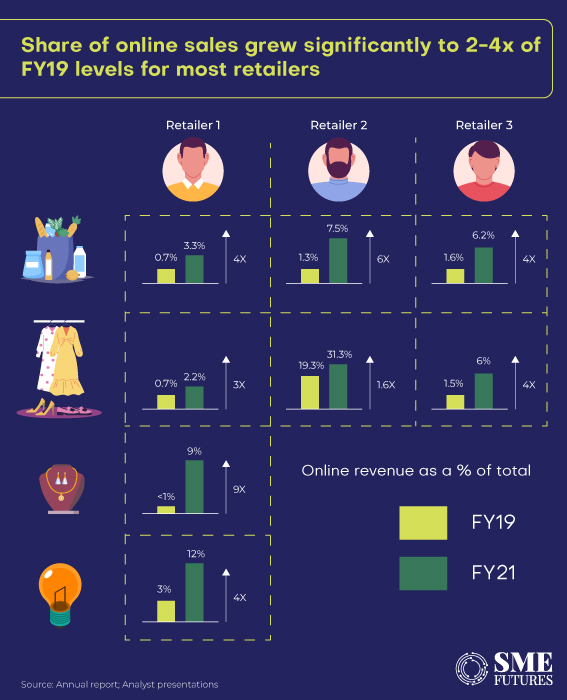
According to the Retail Business Survey by the Retailers Association of India (RAI), India reported a growth of 18 per cent in retail business sales as compared to the pre-pandemic levels of July 2019.
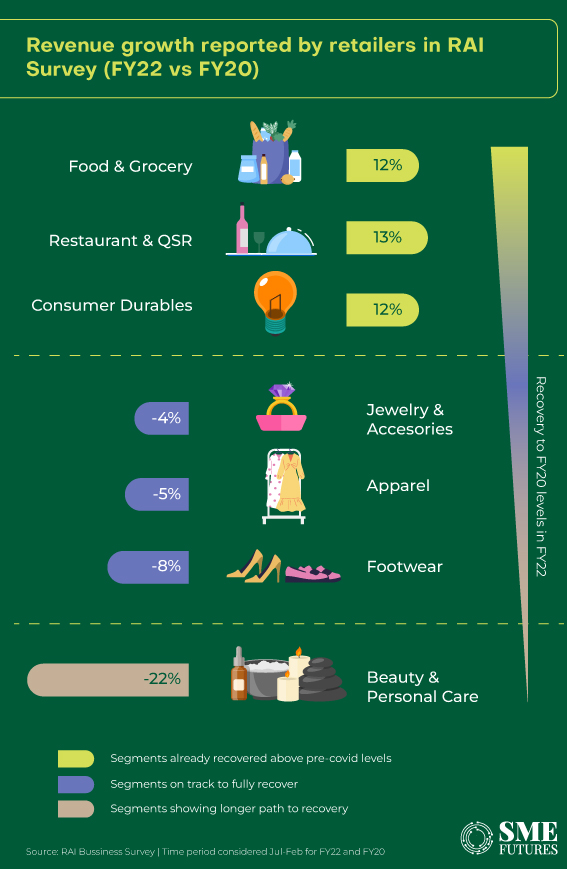
Turning the festive fervour in their favour
There is both excitement and anxiety amongst the retailers regarding the upcoming festivals. They have their plans in place and have stocked up well as they usher in the festive season. Some sellers are also adopting new age technology and are planning to move their businesses online. From acquiring online platforms and posting online ads to selling their items online via sites like Amazon and Flipkart, they are leaving no stone unturned in their quest to ramp up their sales. The small enterprises should definitely focus on the online space as it will help them to reach a larger audience.
“We plan to take our business online. We have been planning it for a long time now and we think that this is the right time to do it. There are going to be bottlenecks for a while, but I think that by the time that the festivals reach a crescendo, we can manage to sort the major problems out,” says Jayesh Kamal of the Gujarat textile store in Gandhinagar.
The market is still sluggish and stagnant but working in the right manner can help increase the sales. The production of raw materials has also slowed due to the factories being closed for two years during the pandemic. The demand is surplus, but the production is still lagging. These are some of the factors that are holding this sector back, but things are slowly but steadily getting better.
Sporting new outfits during festivals is one way of showcasing one’s festive fervour and celebratory mood, as well as signifying one’s zest for life. Therefore, the garment manufacturers have a golden opportunity to turn this celebratory mood in their favour as these festivities make a much-awaited comeback after two long years.

